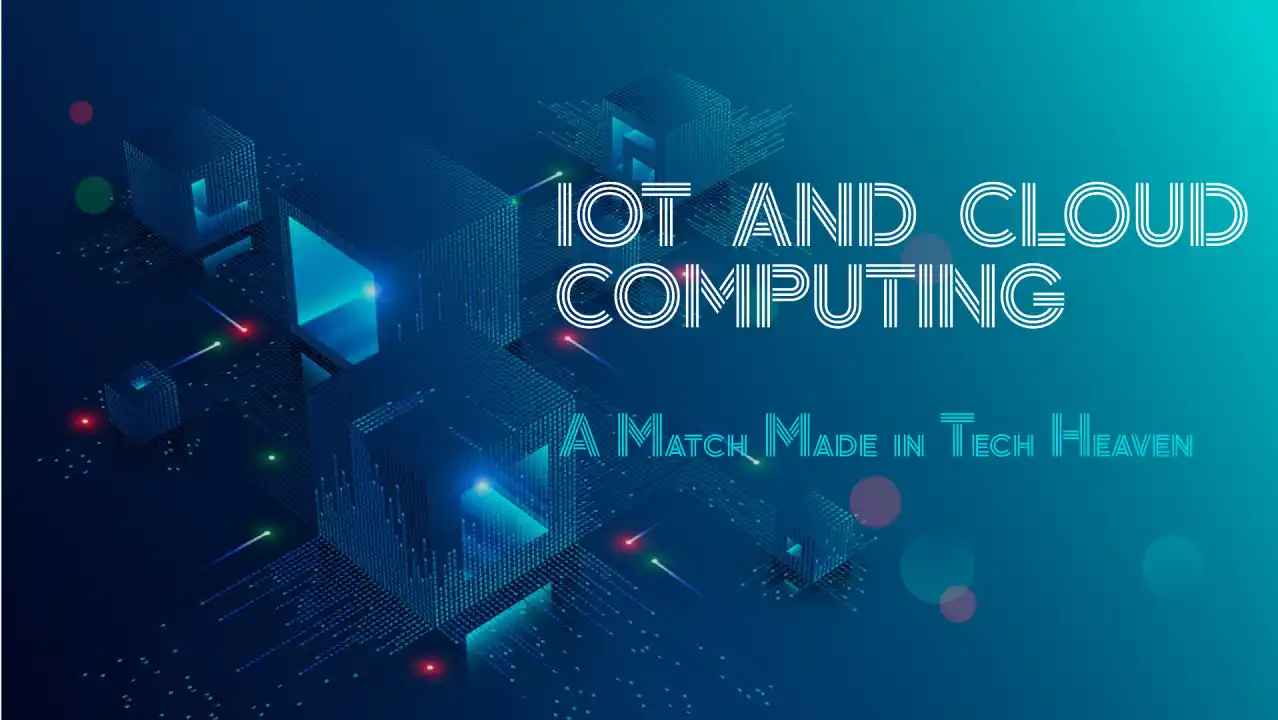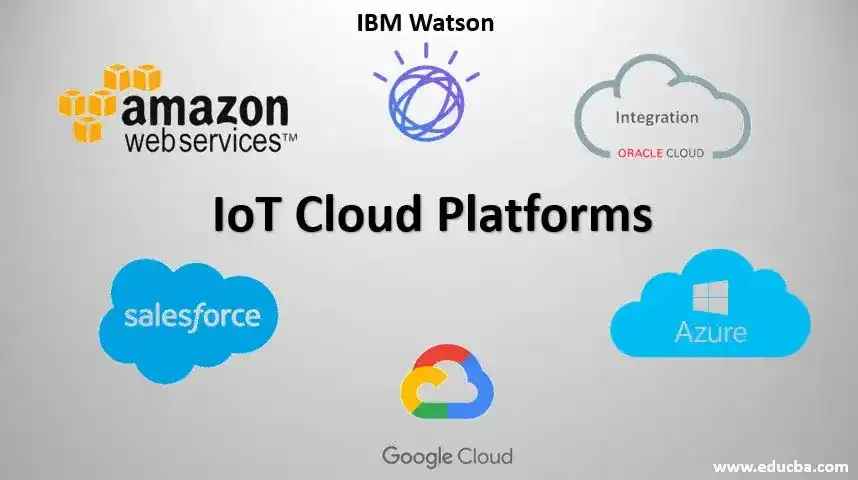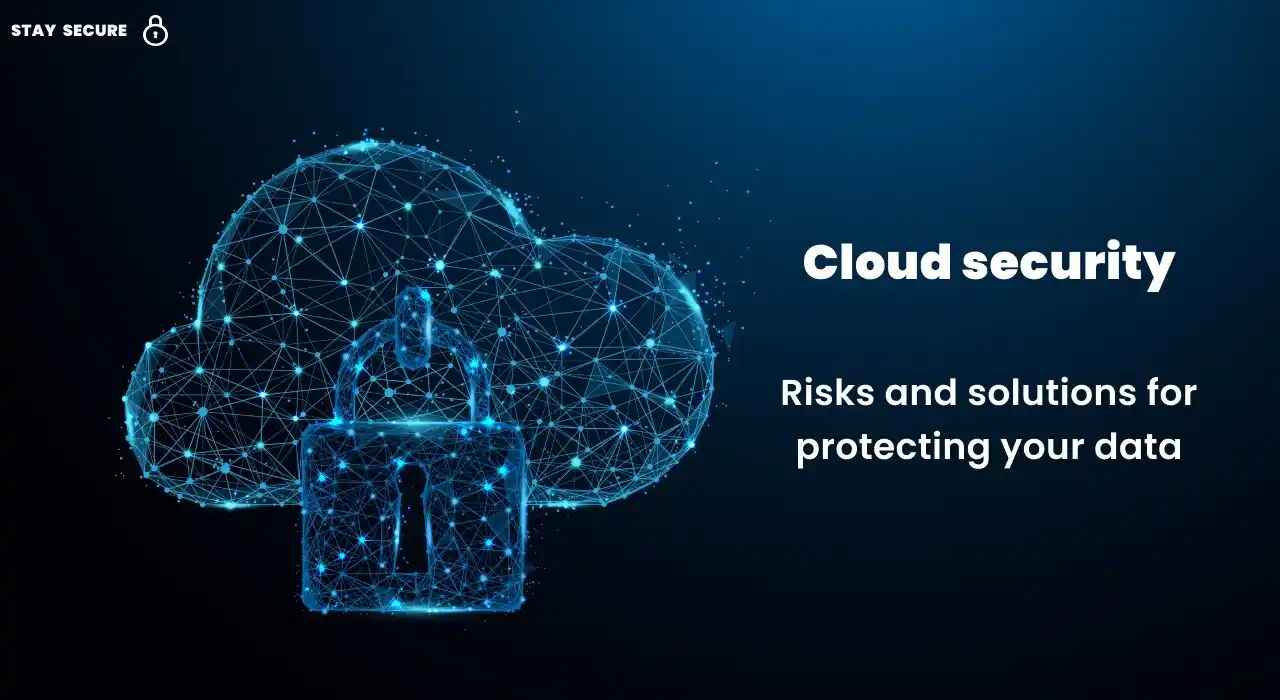IoT and Cloud: A Powerful Duo for Business Success
Updated on : 05 March, 2025

Image Source: google.com
Table Of Contents
- 1. What are IoT Cloud Computing Platforms?
- 2. How Does the Merger of IoT and Cloud Computing Benefit Enterprises?
- 3. Effective Data Integration
- 4. Better Security and Reliability
- 5. Faster Time to Market
- 6. Improved Collaboration
- 7. Disaster Recovery
- 8. Reduced Barrier to Entry
- 9. Efficient Data Mobility
- 10. High Scalability
- 11. Reduced Costs
- 12. Wrapping Up!
- 13. FAQs
Table Of Contents
The Internet of Things (IoT) is generating massive amounts of data, and cloud computing provides the ideal infrastructure to manage, process, and analyze this data effectively. This synergy unlocks powerful insights and enables new business models. Think of it as IoT being the senses of an enterprise, and the Cloud being the brain.
What are IoT Cloud Computing Platforms?

Image Source: google.com
IoT cloud computing platforms are systems that integrate IoT devices with cloud services to enable data collection, processing, and storage at scale. These platforms provide a centralized infrastructure for managing IoT devices and analyzing their data in real time. Key features include:
-
Scalability: They handle millions of connected devices and large volumes of data.
-
Flexibility: Devices can be added or removed without reconfiguring the system.
-
AI Integration: Advanced analytics and AI tools enhance decision-making and automation.
Examples include AWS IoT Core, Microsoft Azure IoT Hub, and IBM Watson IoT.

Get Personalized Expert Guidance on IoT Cloud Integration Solutions
How Does the Merger of IoT and Cloud Computing Benefit Enterprises?
The integration of IoT and cloud computing enables enterprises to optimize operations, cut costs, and make smarter decisions. IoT devices collect vast amounts of data, while cloud platforms store, process, and analyze it in real time, creating a more connected and efficient ecosystem.
Key Benefits:
Remote Device Management
- Monitor and control IoT devices from anywhere using cloud-based dashboards, ensuring proactive maintenance and minimal downtime.
- Example: Smart factories track machine performance and predict maintenance needs.
Cost-Effective Scalability
- Scale IoT infrastructure effortlessly without high upfront costs, paying only for resources used.
- Example: Retailers expand inventory tracking across multiple stores with cloud-based solutions.
Real-Time Analytics
- Gain instant insights with AI-driven analytics to detect trends, prevent issues, and improve decision-making.
- Example: Smart cities optimize traffic flow by adjusting signals based on real-time congestion data.
This synergy is transforming industries, making operations smarter, more agile, and future-ready.
Effective Data Integration
IoT devices generate vast amounts of data from sensors, actuators, and applications. Cloud platforms act as a centralized hub, ensuring efficient data management and analytics.
Key Advantages:
Seamless Device Integration
- Cloud-based systems unify data from multiple IoT devices, ensuring smooth communication and interoperability.
- Example: Smart homes integrate security cameras, thermostats, and lighting systems for centralized control.
Real-Time Analytics
- Cloud platforms process IoT data instantly, providing actionable insights for better decision-making.
- Example: Healthcare IoT devices monitor patient vitals and alert doctors in emergencies.
Unified Systems for Coordination
- Cloud solutions consolidate data from various IoT endpoints, improving operational efficiency and coordination.
- Example: Smart supply chains synchronize data across warehouses, transportation, and inventory systems.
By leveraging IoT and cloud computing, businesses can enhance automation, improve efficiency, and make data-driven decisions in real time.
For the IoT App Development Sevices
Better Security and Reliability

Image Source: google.com
As IoT devices generate and transmit vast amounts of data, security is a top priority. Cloud platforms provide robust security measures to safeguard IoT ecosystems from cyber threats.
Key Security Features
Encryption
- Protects sensitive data during transmission and storage, preventing unauthorized access.
- Example: Smart healthcare devices use end-to-end encryption to secure patient data.
Authentication
- Ensures only authorized devices and users can access the network through multi-factor authentication (MFA) and token-based security.
- Example: Connected home security systems verify user identity before granting remote access.
Disaster Recovery
- Automated backups and redundancy minimize downtime and data loss during system failures or cyberattacks.
- Example: Cloud-enabled industrial IoT (IIoT) systems ensure production continuity after unexpected outages.
By integrating cloud-based security solutions, businesses can enhance IoT resilience, mitigate cyber risks, and maintain data integrity.
Faster Time to Market
Cloud platforms offer pre-built tools and infrastructure, allowing businesses to fast-track IoT solution development without the complexity of building systems from scratch.
Key Advantages:
Rapid Deployment
- Businesses can launch IoT applications faster using ready-made cloud services like device management, analytics, and security.
- Example: A logistics company can integrate real-time tracking without setting up custom servers.
Focus on Innovation
- Developers can prioritize new features and functionality instead of managing backend infrastructure.
- Example: Smart home startups can create AI-driven automation rather than handling server maintenance.
Reduced Time to Market
- Cloud platforms streamline testing, deployment, and scaling, helping businesses gain a competitive edge.
- Example: Wearable health device companies can roll out real-time monitoring solutions in weeks instead of months.
By leveraging cloud-based IoT development tools, enterprises can accelerate digital transformation, lower costs, and enhance scalability.
Improved Collaboration
| Feature | Description | Impact |
|---|---|---|
| Enhanced Transparency | Provides real-time access to IoT data for decision-makers. | Improves operational visibility and oversight. |
| Better Coordination | Ensures unified data flow across teams and partners. | Enhances collaboration and efficiency. |
| Faster Issue Resolution | Enables instant data access for troubleshooting. | Reduces downtime and operational delays. |

Expert IoT Development Solutions for Your Business Growth and Success
Disaster Recovery
Cloud platforms ensure robust disaster recovery mechanisms by:
Automated Backups
- Continuous backups prevent data loss and ensure recovery from failures.
- Data redundancy across multiple locations keeps information secure.
Quick Restoration
- Failover mechanisms enable instant switching to backup servers.
- Critical IoT applications can resume within minutes after disruptions.
Minimal Operational Downtime
- AI-driven analytics predict and mitigate system failures.
- Businesses maintain continuity even during unexpected outages.
Reduced Barrier to Entry
The pay-as-you-go model in cloud services offers businesses flexibility and cost efficiency by:
| Benefit | Description |
|---|---|
| Lower Infrastructure Costs | Eliminates expensive on-premise servers and maintenance costs. |
| Affordable for SMEs & Startups | Reduces upfront investments, making advanced IoT solutions accessible. |
| Scalability & Cost Control | Pay-as-you-go model ensures businesses only pay for what they use, enabling flexible scaling. |
Efficient Data Mobility

Image Source: google.com
Cloud-Integrated IoT: Enabling Seamless Access and Performance
- Remote Data Access – Businesses can monitor and manage IoT data from anywhere via cloud-based platforms, improving operational flexibility.
- Seamless Mobility – Cloud connectivity enables remote teams to collaborate effectively, ensuring smooth workflows across locations.
- Consistent Performance – Scalable cloud solutions maintain uniform performance and real-time data synchronization across multiple sites.
High Scalability
Scalability with Cloud-Integrated IoT
- Efficient Resource Management – Cloud platforms automatically scale resources to handle varying IoT workloads.
- Optimized Cost & Utilization – Prevents unnecessary expenses by avoiding over-provisioning and reducing idle resources.
- Reliable Performance – Ensures smooth operations, even during peak usage, by dynamically allocating computing power and storage.
Reduced Costs
| Cost Factor | Cloud-Based Solution (Pay-as-You-Go) | On-Premise Solution (Fixed Investment) |
|---|---|---|
| Initial Setup | Low upfront cost; $5,000 – $50,000 (₹4L – ₹40L) | High upfront investment; $50,000 – $200,000+ (₹40L – ₹1.6Cr) |
| Maintenance | Managed by provider (included in fees) | Requires IT staff; $50,000+ per year (₹40L+) |
| Scalability | Flexible; pay for what you use | Expensive; requires new hardware |
| Energy Costs | No direct costs | High electricity & cooling; $10,000+ per year (₹8L+) |
| Security | Included in most cloud plans (advanced security extra) | Requires in-house infrastructure; $20,000+ (₹16L+) |
| Disaster Recovery | Automated backups included | Manual backup solutions required (additional costs) |
| Long-Term Costs | Subscription-based; $10,000 – $100,000/year (₹8L – ₹80L) | High initial investment but lower ongoing costs |
Key Takeaways:
- Cloud solutions are cost-effective initially and ideal for startups, SMEs, and businesses needing scalability.
- On-premise solutions are better for enterprises requiring full control, security, and stable workloads.
Wrapping Up
The convergence of IoT and cloud computing is revolutionizing data management and business operations. By leveraging cloud-based infrastructure, enterprises can seamlessly collect, process, and analyze IoT data in real time, leading to greater efficiency and innovation. With growing adoption of hybrid and multi-cloud strategies, businesses are unlocking new opportunities for scalability, automation, and digital transformation, ensuring they stay competitive in an increasingly connected world.
FAQs
Q1. What is the role of cloud computing in IoT?
A: It provides storage, processing power, and connectivity for IoT devices.
Q2. How does cloud computing improve IoT security?
A: Through encryption, authentication, and automated threat detection.
Q3. What are the benefits of integrating IoT with the cloud?
A: Scalability, cost savings, real-time analytics, and remote access.
Q4. Can IoT devices function without cloud computing?
A: Some can, but the cloud enhances efficiency, connectivity, and data management.
Q5. What are the key components of an IoT cloud platform?
A: Device management, data analytics, security, and API integrations.
Q6. How does cloud storage help in IoT applications?
A: It ensures seamless data backup, accessibility, and real-time processing.
Q7. What industries benefit the most from IoT cloud integration?
A: Healthcare, manufacturing, smart cities, retail, and logistics.
Q8. What challenges do businesses face in adopting IoT cloud solutions?
A: Security risks, data privacy concerns, and integration complexities.
Q9. How does cloud computing support IoT scalability?
A: By dynamically allocating resources based on demand, preventing overuse or underutilization.
Q10. What is the impact of cloud computing on IoT data processing?
A: It enables real-time analytics, reducing latency and improving decision-making.


